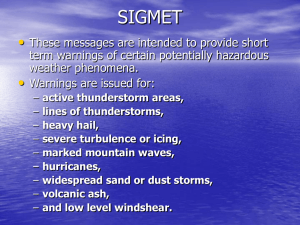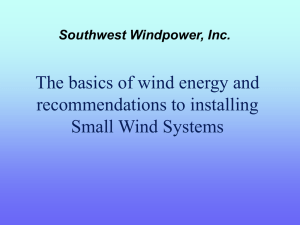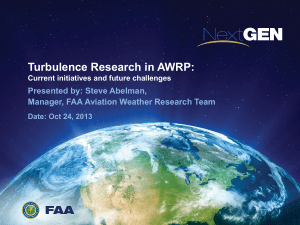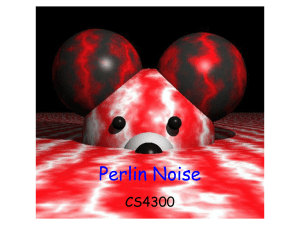Wind noise causes poster - National Acoustic Laboratories
advertisement
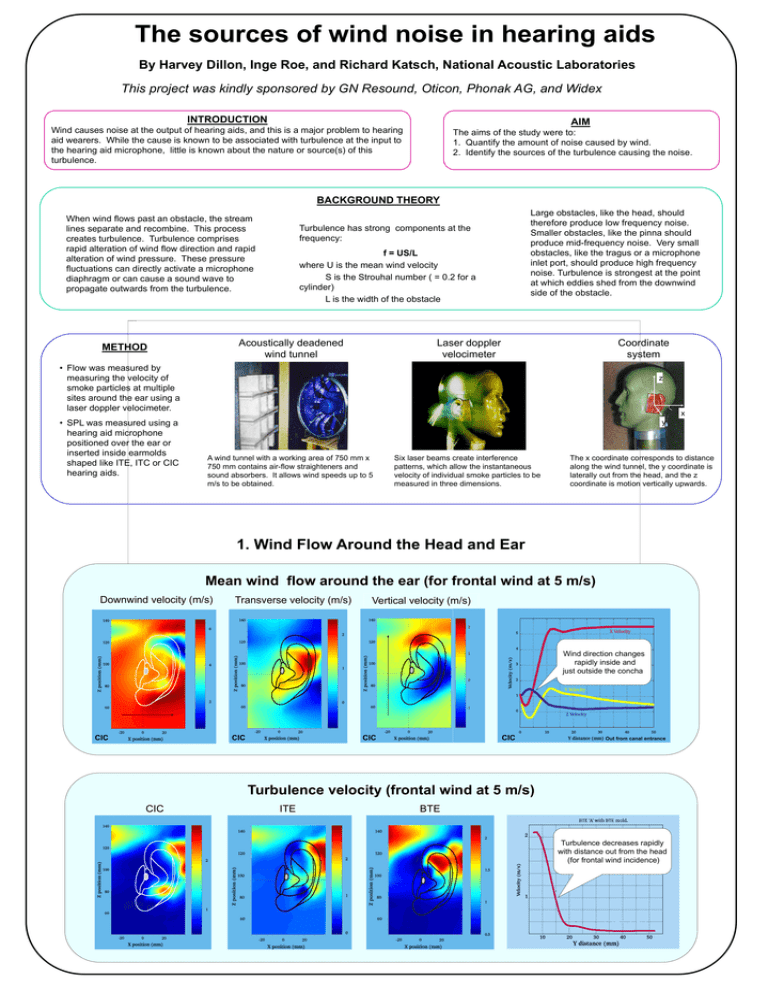
The sources of wind noise in hearing aids By Harvey Dillon, Inge Roe, and Richard Katsch, National Acoustic Laboratories This project was kindly sponsored by GN Resound, Oticon, Phonak AG, and Widex INTRODUCTION AIM Wind causes noise at the output of hearing aids, and this is a major problem to hearing aid wearers. While the cause is known to be associated with turbulence at the input to the hearing aid microphone, little is known about the nature or source(s) of this turbulence. The aims of the study were to: 1. Quantify the amount of noise caused by wind. 2. Identify the sources of the turbulence causing the noise. BACKGROUND THEORY When wind flows past an obstacle, the stream lines separate and recombine. This process creates turbulence. Turbulence comprises rapid alteration of wind flow direction and rapid alteration of wind pressure. These pressure fluctuations can directly activate a microphone diaphragm or can cause a sound wave to propagate outwards from the turbulence. Turbulence has strong components at the frequency: f = US/L where U is the mean wind velocity S is the Strouhal number ( = 0.2 for a cylinder) L is the width of the obstacle Acoustically deadened wind tunnel METHOD Large obstacles, like the head, should therefore produce low frequency noise. Smaller obstacles, like the pinna should produce mid-frequency noise. Very small obstacles, like the tragus or a microphone inlet port, should produce high frequency noise. Turbulence is strongest at the point at which eddies shed from the downwind side of the obstacle. Laser doppler velocimeter Coordinate system • Flow was measured by measuring the velocity of smoke particles at multiple sites around the ear using a laser doppler velocimeter. • SPL was measured using a hearing aid microphone positioned over the ear or inserted inside earmolds shaped like ITE, ITC or CIC hearing aids. z x y A wind tunnel with a working area of 750 mm x 750 mm contains air-flow straighteners and sound absorbers. It allows wind speeds up to 5 m/s to be obtained. Six laser beams create interference patterns, which allow the instantaneous velocity of individual smoke particles to be measured in three dimensions. The x coordinate corresponds to distance along the wind tunnel, the y coordinate is laterally out from the head, and the z coordinate is motion vertically upwards. 1. Wind Flow Around the Head and Ear Mean wind flow around the ear (for frontal wind at 5 m/s) Downwind velocity (m/s) Transverse velocity (m/s) Vertical velocity (m/s) Wind direction changes rapidly inside and just outside the concha CIC CIC CIC CIC Out from canal entrance Turbulence velocity (frontal wind at 5 m/s) CIC ITE BTE Turbulence decreases rapidly with distance out from the head (for frontal wind incidence) ITC and CIC aids are shielded from turbulence created by the head, but are in the path of turbulence created by the tragus, pinna and concha. The profile is smoother for ITEs. Tragus ITE Tragus At -50° incidence, the head causes large, low-frequency eddies which detach near the pinna causing high noise levels. The pinna reduces turbulence as they detach. At 0° incidence, the pinna is a major source of turbulence. At 90° incidence, the flow separates and does not come near either pinna, so noise levels are relatively low. 2. Sound Pressure Levels at the Hearing Aid Microphone Broad spectrum when the head and pinna both contribute to noise 100 90 80 -90 -60 -30 0 30 60 90 70 60 50 Low frequency emphasis when wind comes from the far side. 40 25 50 100 200 400 800 Local maximum at -50° created by head eddies 1600 3150 6300 Local maximum at 0° created by tragus eddies Frequency (Hz) ITE quieter than ITC or CIC over the frequency range where the tragus causes turbulence 100 BTE 90 ITC 80 70 ITE BTE ITE ITC CIC 60 50 CIC 40 25 50 100 200 400 100 100 Hz 90 80 70 2 kHz 60 50 -90 800 1600 3150 6300 BTE 90 ITC 80 BTE ITE ITC CIC BTE no ear 60 50 ITE 40 25 50 -30 100 200 Frequency (Hz) 400 800 1600 3150 6300 0 • The pinna creates medium-frequency turbulence, especially at position of BTE microphone 90 100 90 BTE 80 BTE ITE ITC CIC BTE no ear 70 60 50 CIC 40 25 50 100 200 400 • Small obstacles (e.g. tragus and microphone inlet port) create high-frequency turbulence. • BTEs are noisiest because the microphone is in the wake of the pinna. • CICs are least noisy for most angles because the microphone is shielded by the concha. • ITEs are least noisy for some angles and frequencies because the aid and the pinna form a smooth surface. • Levels are very intense, even for a light breeze • Noise levels easily saturate hearing aids. 800 1600 3150 6300 Frequency (Hz) Conclusions • The head creates low-freq turbulence, especially on down-wind side 60 - 50 degrees (far side) Frequency (Hz) • Wind noise has a broad spectrum whose shape depends on wind direction, and the spectrum extends down to very low frequencies • Obstacles (head, pinna, tragus) can act as: Wind guards Turbulence source Turbulence shedder 30 Slightly higher noise levels at the BTE position when the pinna is detached Much lower noise levels at the BTE position when the pinna is detached 100 70 -60 Azimuth (degrees) 30 degrees 1/3 octave level (dB SPL) 1/3 octave level (dB SPL) 0 degrees 1/3 octave level (dB SPL) ITE 1/3 octave level (dB SPL) 1/3 octave level (dB SPL) BTE





